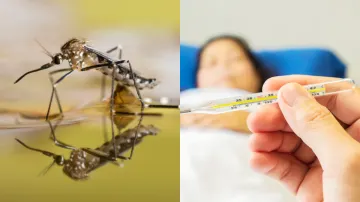Waterborne diseases are a significant global health issue, impacting millions of individuals each year. These illnesses are caused by microscopic organisms, including viruses and bacteria, that are ingested through contaminated water or contact with faeces. The following overview highlights the primary waterborne diseases, their impacts, and preventive strategies.
The toll of waterborne diseases
When we spoke to Dr Ranga Santhosh Kumar, Consultant General Physician & Diabetologist, Yashoda Hospitals Hyderabad, regarding the toll of waterborne diseases, he said that each year, it afflicts hundreds of millions of people, particularly those in developing countries lacking access to safe and clean water. Among these diseases, diarrhoea stands out as the most prevalent, and it is the central symptom of several waterborne illnesses. Diarrhea is the second leading cause of death for children under the age of five, surpassing malaria, AIDS, and measles combined. The disease is a major health concern, as it reflects broader issues related to water quality and sanitation.
Common waterborne diseases and their prevention
Typhoid Fever
Typhoid fever is a well-known waterborne disease prevalent in extremely poor regions of developing nations. It is estimated that up to 20 million people worldwide suffer from typhoid each year. The disease spreads through contaminated food, unsafe water, and poor sanitation, making it highly contagious.
Prevention: Vaccines are recommended for travellers and individuals in areas with poor sanitation. The vaccine can be administered via an injection or taken orally over several days. To avoid typhoid, refrain from drinking unsealed or untreated water and avoid food from street vendors or untrusted sources. Antibiotics are used for treatment.
Hepatitis A
Hepatitis A is a liver infection caused by consuming contaminated food and water or by close contact with an infected individual. It poses a risk to those travelling to or working in areas with inadequate sanitation and hygiene.
Prevention: The best preventive measure is vaccination. Additionally, consume only thoroughly cooked foods served hot and avoid items at room temperature. Opt for fruits that can be peeled by yourself to minimise risk.
Salmonella
Salmonella infection typically results from ingesting food or water contaminated with feces. It can also be transmitted through undercooked meat, eggs, and contaminated fruits and vegetables.
Prevention: Ensure thorough cooking of food and prompt storage or freezing within 30 minutes of preparation. Avoid contact with birds or reptiles, and maintain rigorous handwashing practices.
The path forward: Addressing the root causes
The eradication of waterborne diseases hinges on improving global sanitation and hygiene standards. If every individual had access to safe water and practised proper sanitation, many of these diseases would be significantly reduced or eliminated. Addressing the root causes involves enhancing infrastructure, education on hygiene practices, and ensuring access to clean drinking water.
While waterborne diseases continue to pose a significant challenge, understanding their prevention and treatment can mitigate their impact. Increased global efforts toward sanitation and hygiene can lead to a future where these diseases are no longer a major health threat.
